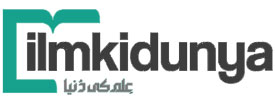-
 Home
Home
-
 News
News
Latest Educational News Stories
Daily update of all national, international news, picture stories, college / university announcements and educational events.
-
 Colleges
Colleges
Pakistan's Largest Database of Colleges and Universities
Explore Largest Directory of Private and Govt. Colleges, Universities and find best institute for your future Education.
-
 Courses
Courses
-
 Admission
Admission
-
 Lectures
Lectures
-
 Online Test
Online Test
Short Question
- 9th Class Physics Short Questions
- 9th Class Chemistry Short Questions
- 9th Class Math Short Questions
- 9th Class Biology Short Questions
- 9th Class Computer Short Questions
- 9th Class English Short Questions
- 10th Class Physics Short Question
- 10th Class Chemistry Short Question
- 10th Class Math Short Question
- 10th Class Biology Short Question
- 10th Class Computer Short Question
- 10th Class English Short Question
-
 Past Papers
Past Papers
-
 Date Sheets
Date Sheets
-
 Results
Results
Exam Results 2024
Check online Results 2024 Matric Inter BA BSc B.Com MA MSc M.Com CSS PCS MCAT ECAT of all educational boards and universities in Pakistan
-
 Study Abroad
Study Abroad
Study Abroad Programs and Opportunities for Pakistani Students
Explore free study abroad search to find programs, consultants, events to study in USA, UK, Australia, China, Malaysia and many others.
-
 Jobs
Jobs
-
 Tutors
Tutors
-
 More
More
-
 Apps
Apps
7th Class Mathematics Ch. 4 Online Test

7th Class English Medium Subjects
7th Class Urdu Medium Subjects
MCQ's Test For Chapter 4 "Mathematics 7th Class English Medium Chapter 4 Online Test"
Try The MCQ's Test For Chapter 4 "Mathematics 7th Class English Medium Chapter 4 Online Test"
-
Total Questions10
-
Time Allowed10
Question # 1
In right angled triangle one angel is 90o and the other angles are
Question # 2
The diagnola in the quadrilateral ............do not bisect each other.
Question # 3
In which quadrillatera, the oppsoite angles are equal.
Question # 4
The order of rotational symmetry of hexagon is
Question # 5
A triangle is called..........traiangleis exactly are angle is of measure greater than90o
Question # 6
If a gigure is divided into two equal parts it is known as
Question # 7
Which of the following quadrillateral has no rotational symettry
Question # 8
How many types of polygons.
Question # 9
A right angled triangle can not be ............... triangle
Question # 10
A triangle with two sides of equal measure is called traangle
7th Math English Medium Chapter 4 Test
Here you can prepare 7th Math English Medium Chapter 4 Test. Click the button for 7th Math English Medium Chapter 4 100% free full practice test.
Top Scorers Of Chapter 4 "Mathematics 7th Class English Medium Chapter 4 Online Test" MCQ`s Test
-
K kinza 26 - Oct - 2025 00 Min 31 Sec 20/20 -
A ASfand satti 11 - Oct - 2025 00 Min 32 Sec 20/20 -
D dure shahwar 09 - Oct - 2025 00 Min 38 Sec 20/20 -
Z Zohan Raja 09 - Oct - 2025 00 Min 49 Sec 18/20 -
S SHAKIR HUSSAIN 14 - Oct - 2025 01 Min 07 Sec 18/20 -
M Muhammad 10 - Oct - 2025 00 Min 54 Sec 16/20 -
M Minahil Imran 12 - Oct - 2025 01 Min 28 Sec 16/20 -
A Ahmad Rao 11 - Oct - 2025 01 Min 57 Sec 16/20 -
H Hamda Tayyab 12 - Oct - 2025 03 Min 31 Sec 16/20 -
F Future School Chak Arian BWN 11 - Oct - 2025 08 Min 20 Sec 16/20 -
A Azhar Sohail 11 - Oct - 2025 02 Min 14 Sec 14/20 -
B Bilal khan 11 - Oct - 2025 01 Min 05 Sec 12/20 -
R Raja Abdullah 18 - Sep - 2025 00 Min 56 Sec 10/10 -
A Ammar Bhatti 10 - Oct - 2025 01 Min 04 Sec 10/20 -
H Haider Ali 12 - Oct - 2025 01 Min 48 Sec 10/20
| Sr.# | Question | Answer |
|---|---|---|
| 1 | How many types of polygons. |
A. 2
B. 3
C. 4
D. 5
|
| 2 | If a gigure is divided into two equal parts it is known as |
A. Reflection
B. Rotation
C. Image
D. Translation
|
| 3 | A triangle is called..........traiangleis exactly are angle is of measure greater than90o |
A. Obtuse
B. Acute
C. Right
D. None
|
| 4 | In right angled triangle one angel is 90o and the other angles are |
A. Complemenatry
B. Supplemenatary
C. Obtuse
D. Corresponding
|
| 5 | In which quadrillatera, the oppsoite angles are equal. |
A. Rectangle
B. Trapezium
C. Saquare
D. Rohombus
|
| 6 | The diagnola in the quadrilateral ............do not bisect each other. |
A. Saqure
B. Kite
C. Rectangle
D. Rhombus
|
| 7 | Which of the following quadrillateral has no rotational symettry |
A. Kite
B. Rectangle
C. Rhomobus
D. Square
|
| 8 | In which quadrilateral, there are no parallel lines |
A. Square
B. Kite
C. Rectange
D. Rhombus
|






























